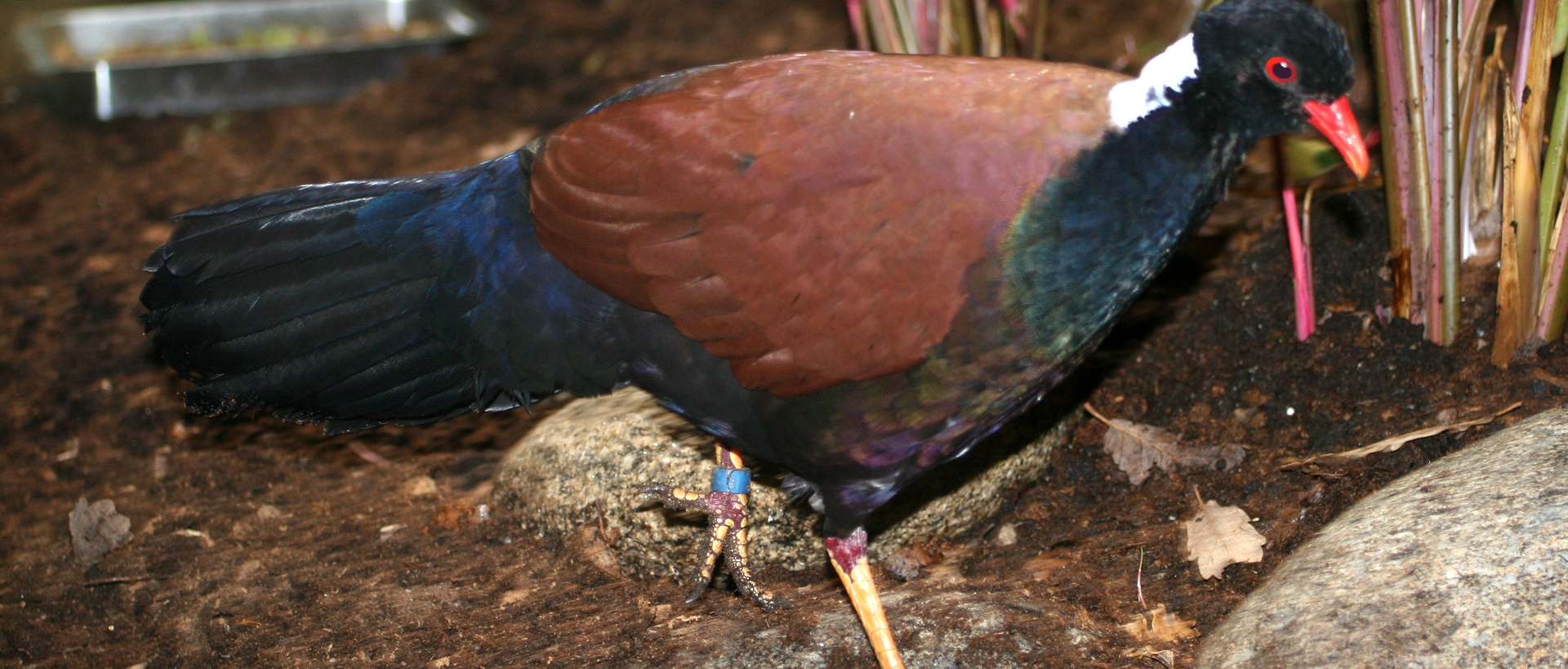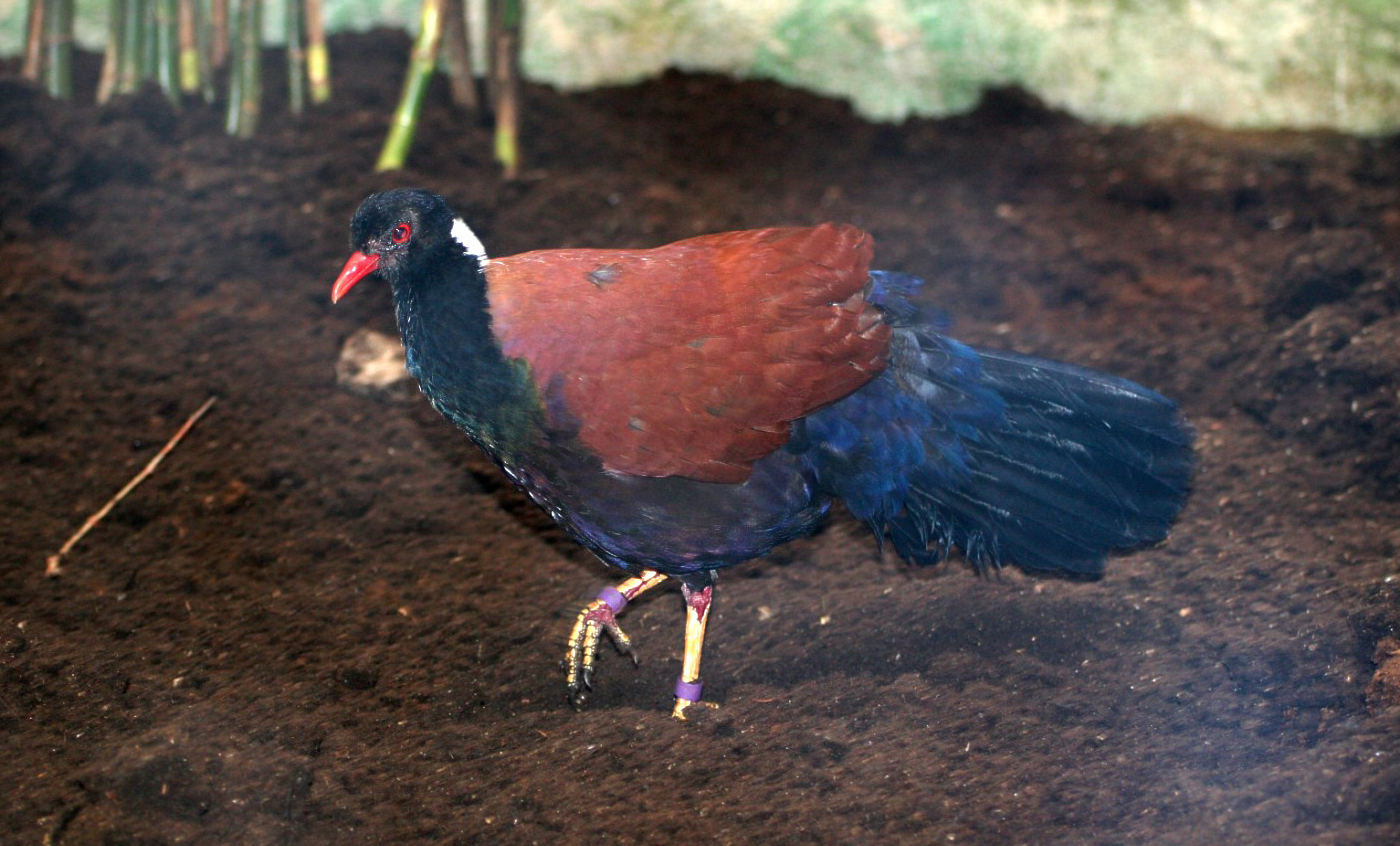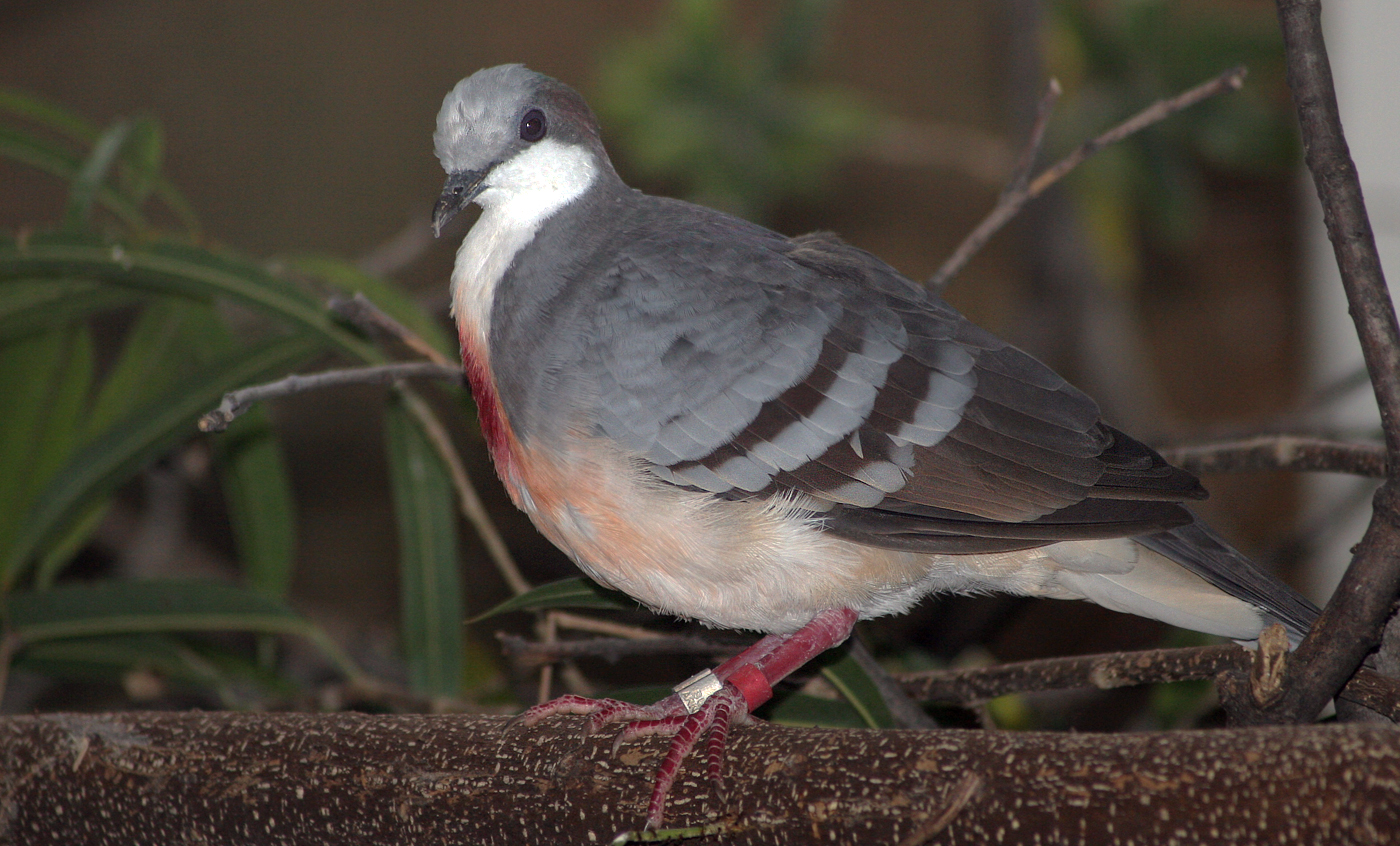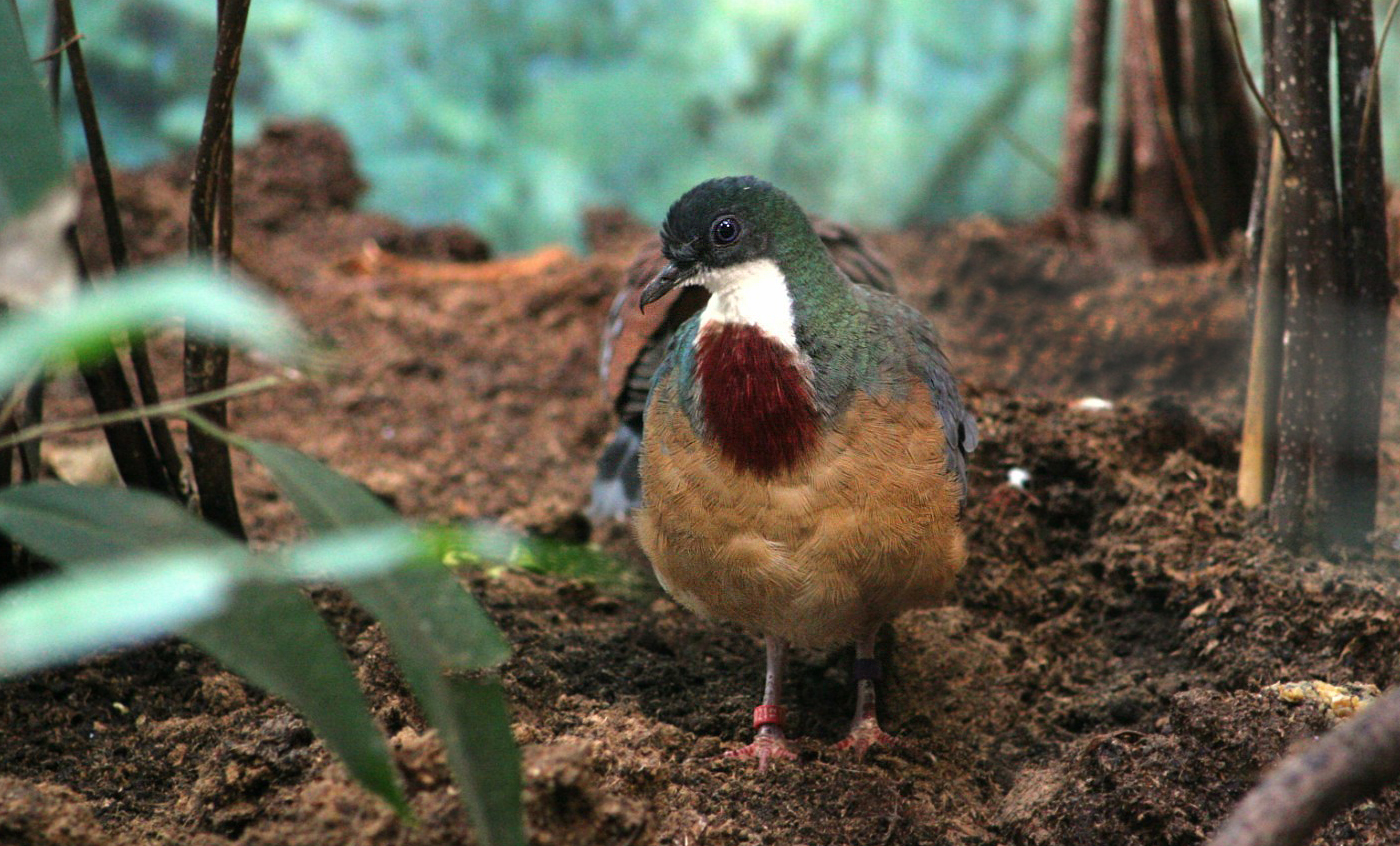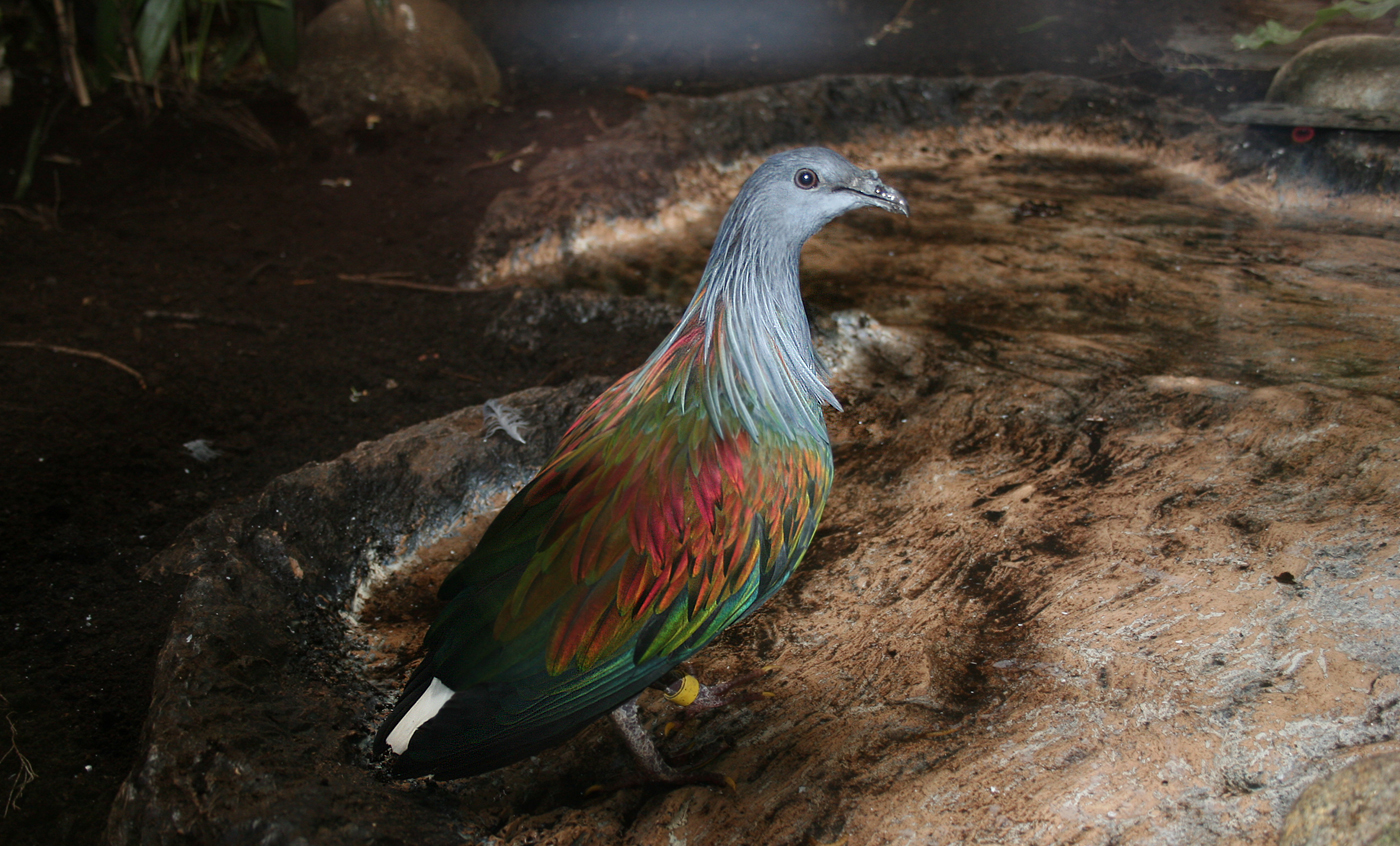White-naped pheasant pigeon
This bird gets its name from the fact that, although it's a pigeon, its terrestrial habits and developed tail clearly resemble those of a pheasant. The bird nervously moves its laterally flattened tail up and down as it walks along the ground. The white-naped subspecies only lives on the small Aru Islands, close to New Guinea.
Breeding program
Natural habit
New Guinea
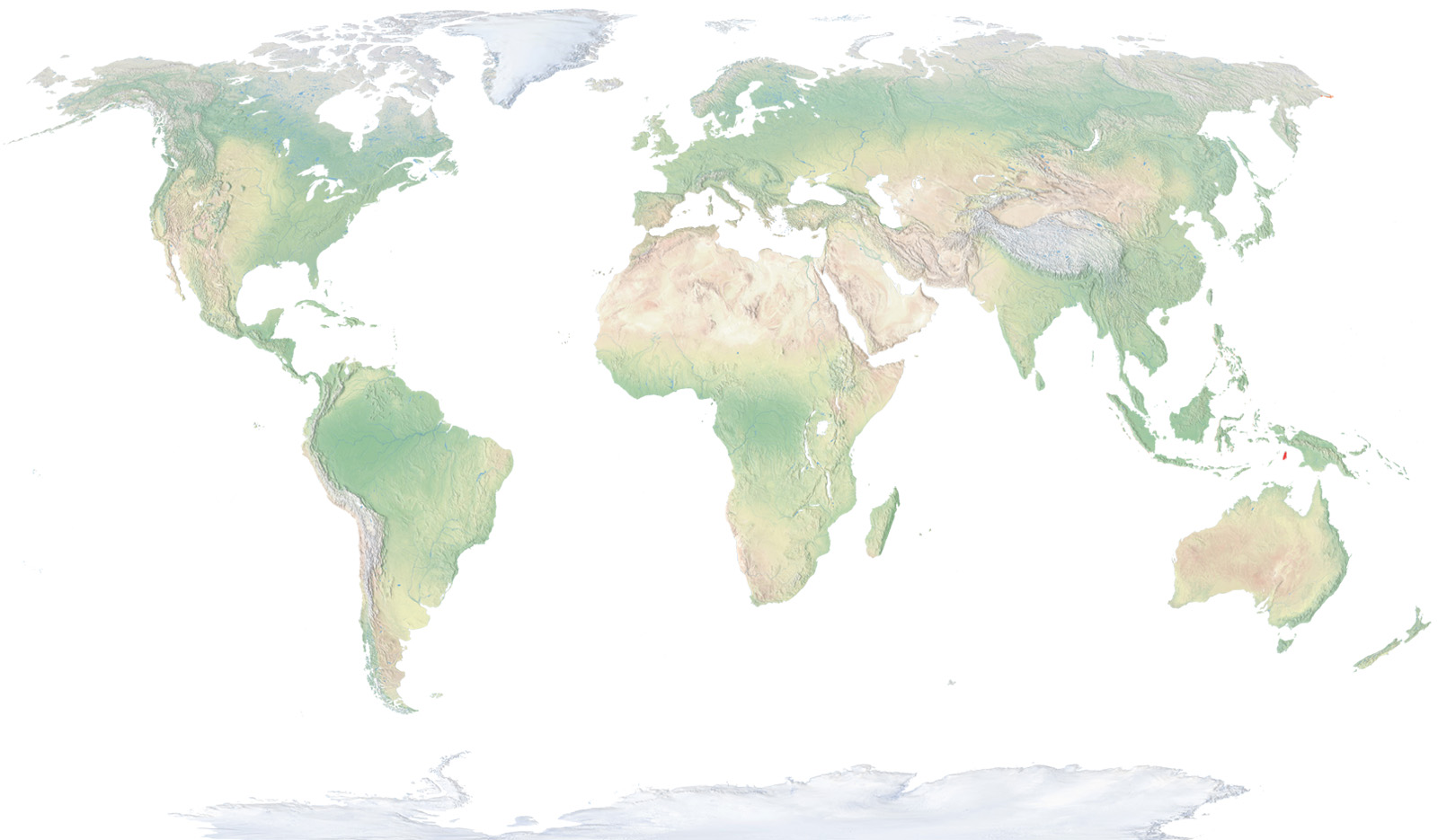
- Distribution / Resident
- Breeding
- Wintering
- Subspecies
Risk level
- Extint
- Extint in the wild
- Critically endangered
- In Danger
- Vulnerable
- Near threatened
- Minor concern
- Insufficient data
- Not evaluated
Taxonomy
Physical characteristics
Biology
Reproduction
Biology
The pheasant-pigeon has been christened with this name because, despite being an authentic pigeon, its terrestrial habits and well-developed tail clearly bring to mind pheasants. They move their laterally-compressed tails nervously up and down when on the ground. The white-naped pheasant-pigeon, different from the other subspecies due to the white spot on the back of its neck, only inhabits the small Aru Islands, close to New Guinea.
The other existing subspecies, inhabits of New Guinea and other surrounding small islands, have different coloured spots on their napes, either green (Otidiphaps nobilis nobilis), black (Otidiphaps nobilis insularis) or grey (Otidiphaps nobilis cervicalis).
They travel alone or in pairs on the ground of the lowland rainforests that are their preferred habitat, although they are also found in medium-height monsoon forests.
They feed on grains, seeds, tender shoots and fruits that fall off the trees.
The nest is a simple platform made with twigs that they normally build at the bottom of trees and shrubs or among their thick roots.
Solitary, they are generally spotted either alone or in a pair. It is considered resident and sedentary throughout its area of distribution.
Their populations seem to be quite stable on the Aru Islands, except in the areas devastated by jungle deforestation. Nonetheless, and due to the extremely limited area it occupies and the growing destruction of its habitat, this species is deemed vulnerable.
The Barcelona Zoo participates in the European Studbook (ESB) for this species in captivity and keeps one of the most important breeding colonies in all Europe for this threatened pigeon.



